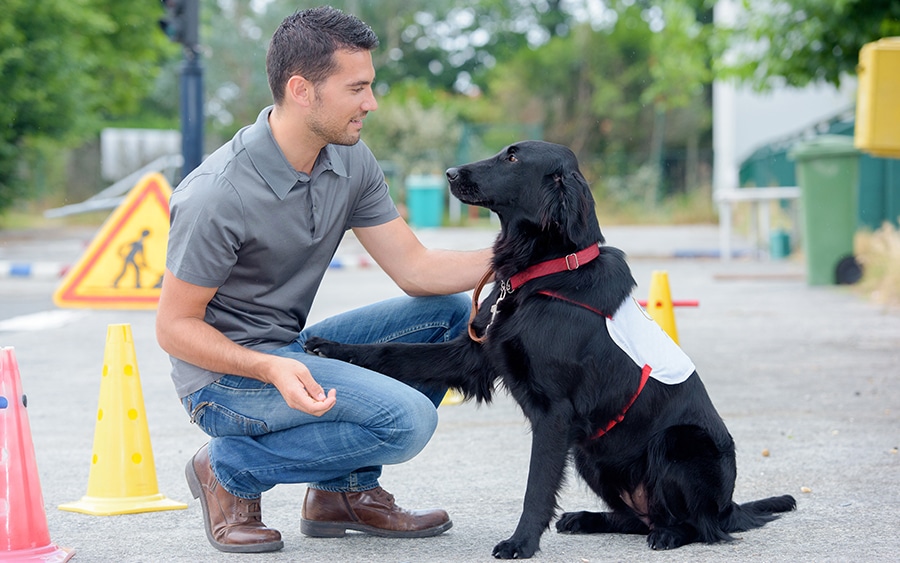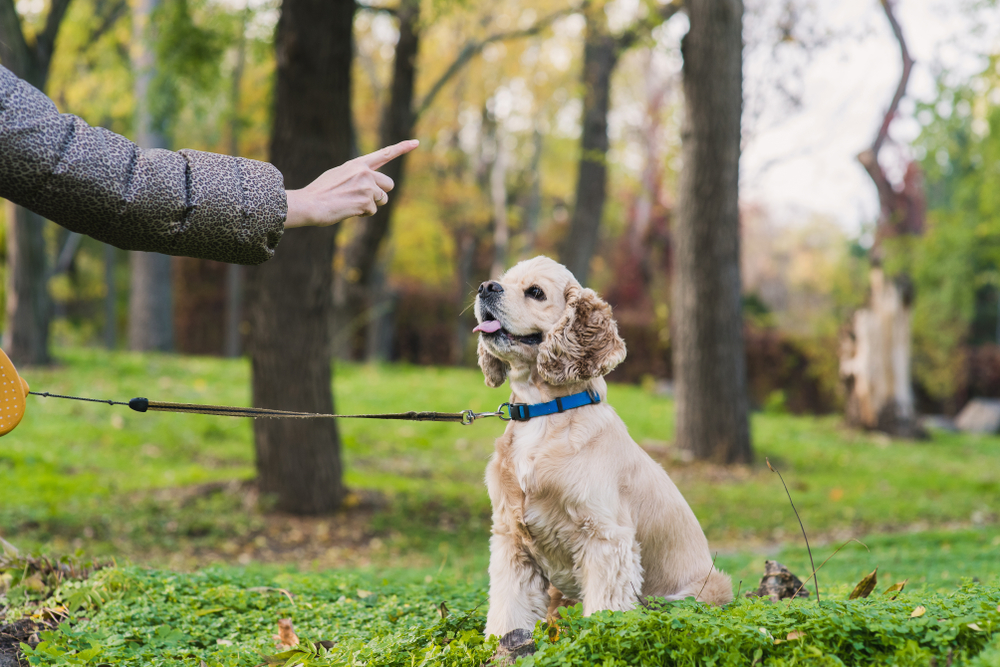Essential Tips for Successful Dog Training: A Guide for Beginners
Essential Tips for Successful Dog Training: A Guide for Beginners
Blog Article
Novice's Guide to Effective Pet Training in your home
Efficiently educating a dog in the house needs a nuanced understanding of canine actions and efficient communication techniques. Establishing clear training goals, using high-grade incentives, and preserving consistency across household participants are crucial components. Incorporating training into day-to-day routines can boost both involvement and retention. Numerous novice trainers encounter obstacles that might prevent development. To navigate these complexities successfully, it's vital to explore a number of essential elements that can change your method and result in an unified connection with your pet dog. What essential concepts should every newbie grip to guarantee success?
Understanding Canine Behavior
Understanding pet actions is essential for effective training and fostering an unified partnership in between people and their canine buddies. Canines communicate primarily through body movement, articulations, and faces, making it important for proprietors to translate these signals precisely. Recognizing habits such as tail wagging, growling, or cowering can provide understandings right into a canine's emotion and intents.

Usual behavioral concerns, such as hostility, anxiety, or too much barking, usually stem from misconceptions or unmet demands. Observing and dealing with these concerns promptly can avoid rise and ensure a positive training experience. By promoting a deep understanding of pet behavior, owners can customize their training approaches to suit their canine friends, inevitably resulting in a satisfied and mannerly pet dog.
Important Training Devices
A fully equipped training room can substantially enhance the performance of dog training in the house. Necessary training tools make sure that both the instructor and the pet can engage in productive sessions that foster learning and bonding.

Investing in a tough chain and a comfortable, well-fitting collar or harness is vital for safety and security and control. These devices help develop limits and ensure the pet dog remains safe and secure during training. Additionally, a marked training area, without disturbances, aids focus for both the pet dog and the trainer.
Educating aids such as training pads, cones, or agility devices can also boost the experience by introducing selection and difficulties. Last but not least, having a notebook or electronic app for tracking progression can be vital, enabling you to keep in mind successes and areas for renovation. Utilizing these crucial tools will develop a positive training environment and lay the foundation for reliable learning.
Producing a Training Regimen
Developing a consistent training regimen is vital for effective pet dog training at home. A well-structured routine not just assists in enhancing preferred actions yet also provides your canine with a feeling of safety and security and predictability. To develop an effective training routine, begin by determining details training objectives, such as basic commands, leash walking, or house-breaking.
Select an assigned time every day for training sessions, preferably when your pet dog is sharp and responsive. Procedure needs to be brief, about 5 to 15 mins, dig this to keep emphasis and protect against fatigue. Consistency in timing and environment will enhance your pet dog's learning experience.
Include training into daily tasks to reinforce abilities. Technique commands throughout walks or mealtime, which incorporates finding out right into natural routines. In addition, continue to be versatile and adjust the routine as essential, suiting your pet dog's energy degrees and state of mind.
Positive Reinforcement Strategies
Positive reinforcement strategies are essential to effective canine training, advertising preferred behaviors via benefits rather than penalty. This technique utilizes favorable stimuli, such as deals with, praise, or playtime, to urge canines to duplicate certain actions. The cornerstone of this strategy is timing; benefits should be provided promptly following the wanted habits to develop a clear association.
When executing favorable reinforcement, it is important to pick rewards that are inspiring for your pet dog. High-value deals with, such as small pieces of hen or cheese, can be especially reliable during training sessions. Furthermore, varying the benefits can keep your dog's passion and enthusiasm.
Begin with simple commands, like "sit" or "remain," and gradually development to extra complex tasks. Uniformity is vital; make sure that all household members utilize the exact same commands and incentive systems to avoid confusion.
Furthermore, it is essential to remain individual and stay clear of irritation. Dogs, like people, find out at their very own pace. By promoting a helpful training atmosphere via positive reinforcement, you can improve your pet's knowing experience while enhancing the bond in between you and your furry buddy, preparing for effective training outcomes.
Common Training Difficulties
While educating a dog at home can be a satisfying experience, it frequently includes a collection of common difficulties that can examine both patience and consistency. One widespread concern is disturbance. Dogs may come to be easily sidetracked by sounds, activities, or perhaps fragrances in their setting, making it difficult to maintain visit this site their emphasis throughout training sessions.
An additional obstacle is incongruity in commands and support. If household participants make use of various hints or benefits, it can hinder and confuse the dog progression. Establishing a unified approach is important for effective interaction.
In addition, pet dogs can experience irritation or stress and anxiety, specifically if they do not comprehend what is expected of them. This can lead to unwanted habits, such as barking or chewing.
Lastly, the timing of reinforcement is critical (Dog training). Postponed this contact form benefits can decrease the performance of favorable reinforcement, as pets may fail to attach the habits with the reward
Overcoming these obstacles requires dedication, clear communication, and an organized training plan. Recognizing and resolving these common challenges will certainly pave the means for a much more successful and satisfying training experience in your home.
Verdict
In conclusion, successful dog training at home necessitates an extensive understanding of canine habits and efficient communication methods. By developing clear training objectives and making use of high-grade deals with along with favorable reinforcement, the training process comes to be extra gratifying for both the trainer and the pet.
Developing a regular training regimen is essential for reliable pet training at home.Favorable reinforcement methods are fundamental to effective dog training, advertising preferred habits through rewards instead than penalty (Dog training). By promoting a supportive training environment via favorable reinforcement, you can boost your pet's discovering experience while enhancing the bond between you and your hairy buddy, laying the groundwork for effective training results
In conclusion, effective pet dog training at home necessitates a comprehensive understanding of canine actions and efficient communication strategies. By establishing clear training objectives and using top quality deals with along with positive support, the training process becomes a lot more gratifying for both the dog and the instructor.
Report this page